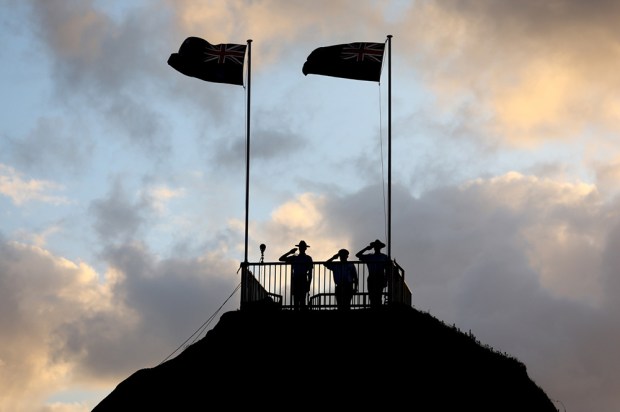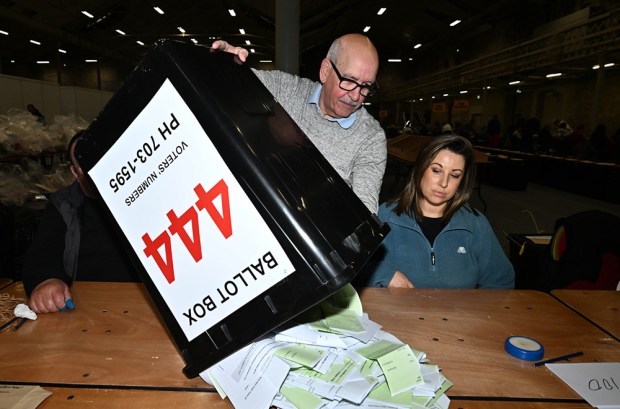Double dissolution or double disillusion? The malapropism of the moment captures the mood of voters facing a dismal choice: a revenue-grubbing opposition or a government threatening to go to war on savers with stealth taxes targeting the nest eggs of superannuants.
The government has just spent millions of dollars exhorting us to be more innovative. Well, here’s a novel thought. What about the government getting lean and agile instead of hitting us up for more taxes? Here are a few tips you won’t see in a government-funded ad campaign.
Health: We spend 9.4 per cent of GDP on health, Hong Kong spends just 5.2 per cent and a meagre $1,800 per capita compared to our $6,100. And they live longer. Singapore, Israel, Spain, South Korea, Italy and Japan are also all more efficient.
It’s not surprising. Even the federal department of health and ageing says 10 per cent of health spending is wasted, a whopping $15 billion annually. And the ABC’s Four Corners, hardly a nest of neocons, recently identified $46 billion wasted annually.
In 2012, medical experts identified ‘at least 150 unsafe, inappropriate or ineffective medical services that receive Medicare and health insurance rebates’. At least 75,000 MRI knee scans and 20 per cent of knee replacements may be unnecessary. Ditto for a range of procedures and tests for lower back pain, angina and prostate cancer.
The Greens back these savings and Labor tried to reduce payments for cataract surgery so the major parties should be on a unity ticket. The government has started doing this but they need to make it a top priority.
Paying doctors per procedure rather than per episode of care exacerbates the problem, providing an incentive for the unscrupulous to over-service. Worse, patients are not able to check the medical record of practitioners and avoid the Doctor Deaths, which would save lives and insurance premiums. Labor should support the federal government only funding a percentage of the efficient price of a procedure since it was their idea. This would force the states to put downward pressure on high pricing hospitals because the states, not the Commonwealth, would pay the difference.
Education: We are spending billions more on schools, mostly reducing class sizes. Yet scores on reading, maths and science show 15 year olds perform worse now than in 2000. In global testing on maths and science at age 15, Australia scrapes in at a miserable 14. The top 5 countries are all Asian – Singapore, Hong Kong, South Korea, Japan and Taiwan – and have larger class sizes than we do.
Their secret? The OECD’s education director says, ‘If you go to an Asian classroom you’ll find teachers who expect every student to succeed. There’s a lot of rigour, a lot of focus and coherence. These countries are also very good at attracting the most talented teachers in the most challenging classrooms, so that every student has access to excellent teachers.’
On teacher quality the Australian story is also depressing. Between 1983 and 2003, teachers were drawn from the top 26 to 39 per cent of undergraduates. Now teaching degrees have the largest proportion of students with low ATAR scores and more than half the students offered a place have an ATAR in the bottom 50 per cent.
The solution? We outspend Korea by more than $2000 per student in secondary school, and they have five more students per teacher. Yet a Korean aged 12 outperforms an Australian aged 15 in maths and science. If we adopted best practice in Asia, we could raise standards and save $1000 per student saving $3.75 billion per annum.
Childcare: The government has promised to spend $3.5 billion over 5 years on childcare subsidies. But it won’t solve the fundamental problem: a shortage of childcare spaces in some areas driven by the high cost of land and planning restrictions. In Sydney, some suburbs have less than two vacancies a day and waiting lists of up to three years, in others there are between 500 and 1200 vacancies a day.
The solution is not a universal subsidy but a subsidy to operators in areas where there is a shortage in exchange for the provision of affordable care, and incentives for local governments to allow bigger childcare centres.
Digital disruption: Tens of billions of dollars can be saved by eliminating fraud, abuse and errors just by introducing a unique digital identity for each person dealing with government. At the moment it is impossible to check whether a welfare recipient is diligently job seeking in Blacktown or decapitating infidels in Raqqa. Similar savings can be made in tax, health, welfare and disability. And using digital technology to reduce the public service headcount, remove duplication and red tape, and speed up approvals, will raise private sector productivity.
Climate change: Even sticking to current targets, purchasing all emissions reductions wherever they are cheapest would be a multi-billion dollar saving, especially if the RET was abolished and those emissions purchased at least cost. Australia recently purchased 92 million tonnes of emissions reductions at $13 a tonne whereas BP reportedly traded emissions in Shenzhen at $5 a tonne. Meanwhile the estimated subsidy for solar energy in Australia is over $400 per megawatt hour. Efficient emissions reduction would cut power bills for consumers and business and raise productivity.
Higher Education: Taxpayers underwrite waste in universities through direct subsidies and interest free student loans. Funding universities by allowing institutions to keep the loans their students repay would eliminate the incentive to enrol students who won’t repay the debt and force unis to keep fees and costs down. Requiring government subsidised providers to make cheaper online courses available and to offer courses throughout the year would also reduce the cost of tertiary education to the taxpayer.
Business welfare: Where the bloody hell are the millions we waste on tourism ads? Why do we provide grants and finance insurance to exporters? The revelation that Austrade promoted an alleged Indian ponzi scheme is just the latest painful illustration of how governments pick losers and charlatans pick governments. So here’s an explosive thought for the ideas boom, just axe the lot, save the money and spare us the embarrassment.
Got something to add? Join the discussion and comment below.
Get 10 issues for just $10
Subscribe to The Spectator Australia today for the next 10 magazine issues, plus full online access, for just $10.
You might disagree with half of it, but you’ll enjoy reading all of it. Try your first month for free, then just $2 a week for the remainder of your first year.













Comments
Don't miss out
Join the conversation with other Spectator Australia readers. Subscribe to leave a comment.
SUBSCRIBEAlready a subscriber? Log in